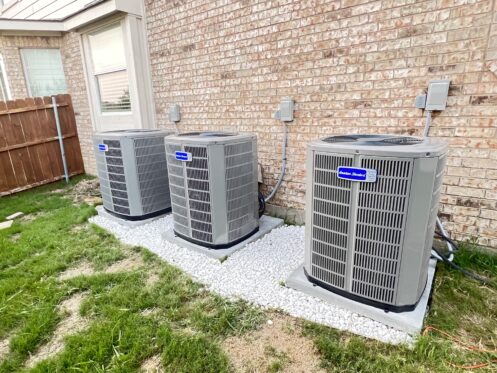Demystifying HVAC BTU: Understanding the Basics
When it comes to heating and cooling systems, you’ve probably come across the term “BTU” at some point. BTU, which stands for British Thermal Unit, is a unit of measurement commonly used in the HVAC industry to quantify the amount of energy required for heating or cooling a space. In this blog post, we’ll delve into the fundamentals of HVAC BTU, its significance, and how it affects your comfort and energy consumption.
What is BTU?
A British Thermal Unit (BTU) is the energy required to raise or lower the temperature of one pound of water by one degree Fahrenheit. In the HVAC context, it represents the heating or cooling capacity required to maintain a comfortable indoor environment. The higher the BTU rating, the greater the heating or cooling capacity of the HVAC system.
Determining the Right BTU for Your Space
Selecting the appropriate BTU rating for your HVAC system ensures optimal comfort and energy efficiency. It’s essential to consider several factors when determining the correct BTU for your space.
1️⃣ Room Size: The size of the room or area being conditioned significantly determines the required BTU. A larger space typically requires a higher BTU rating to maintain the desired temperature.
2️⃣ Insulation: The level of insulation in your building affects heat transfer. Well-insulated spaces require fewer BTUs compared to poorly insulated ones.
3️⃣ Climate: The regional climate and outdoor temperature patterns influence the BTU requirements. Colder climates generally necessitate higher BTU ratings for efficient heating, while warmer climates might prioritize cooling capacity.
4️⃣ Windows and Sunlight: The number and size of windows and the amount of direct sunlight entering the space impact the heating and cooling load. Sun-exposed areas may require additional BTUs to counteract heat gain.
Calculating the Required BTU.
To estimate the required BTU for your space, you can use a simple calculation
Calculate the square footage of the area: Measure the length and width of the space and multiply the values to obtain the square footage.
Consider additional factors: Adjust the calculated square footage by multiplying it with a correction factor to account for insulation, sunlight, and other variables specific to your environment.
Determine the BTU range: Consult an HVAC professional or use online calculators to determine the appropriate BTU range for your square footage and other considerations.
It’s important to note that this calculation provides an estimate, and it’s advisable to consult Texas Pride HVAC for accurate sizing and recommendations based on your specific requirements.
Balancing Efficiency and Capacity
While it might seem logical to opt for the highest BTU capacity available, choosing an HVAC system solely based on capacity can lead to inefficiency and increased energy consumption. Oversized systems may result in frequent cycling on and off, known as short cycling, which wastes energy and can lead to temperature imbalances and increased wear on the system.
Conversely, undersized systems will struggle to meet the heating or cooling demand, leading to inadequate comfort and potential strain on the components.
By selecting an HVAC system that aligns with your calculated BTU requirements, you can strike the right balance between energy efficiency and capacity, ensuring optimal performance and comfort while minimizing energy waste.
Call Texas Pride Heating & Air
Understanding HVAC BTU is essential for selecting the right heating and cooling equipment for your space. Texas Pride Heating & Air can estimate the appropriate BTU range by considering room size, insulation, climate, and sunlight. Consult Texas Pride HVAC professionals to ensure accurate sizing and balance efficiency and capacity. A properly sized HVAC system will help maintain a comfortable indoor environment while maximizing energy efficiency, reducing costs, and reducing costs.








